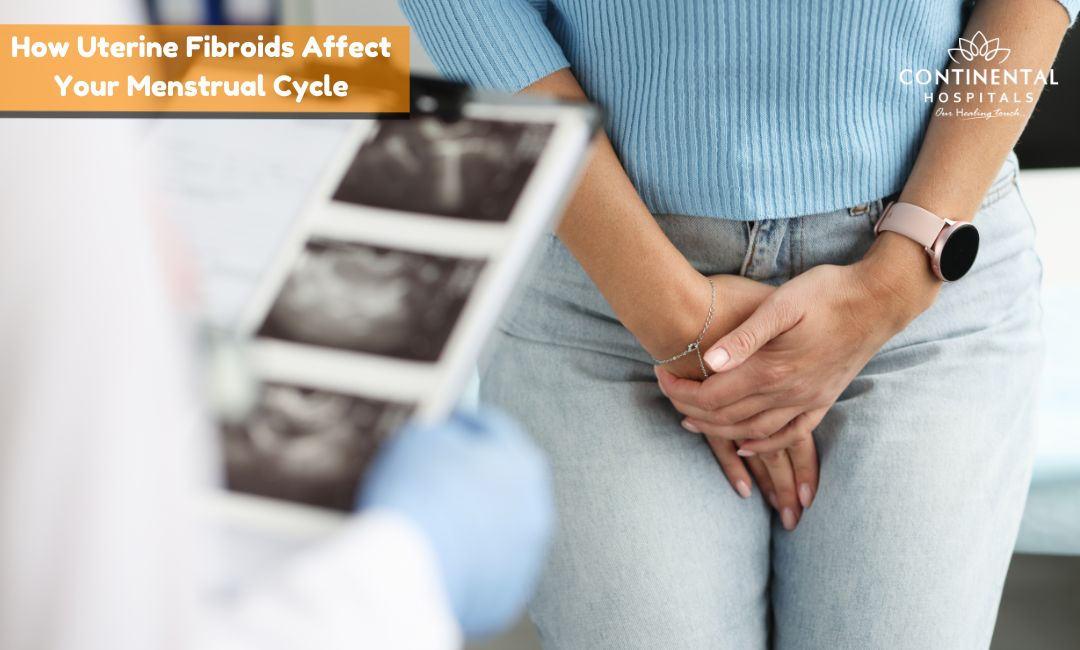Uterine fibroids are non-cancerous growths that develop in or around the uterus. They are quite common, especially among women of reproductive age. While many women with fibroids experience no symptoms, others may face significant disruptions to their menstrual cycles. Understanding how uterine fibroids affect your period can help you manage symptoms and seek appropriate treatment.
What Are Uterine Fibroids?
Uterine fibroids, also known as leiomyomas or myomas, are benign tumors that develop within the muscular tissue of the uterus. They can vary in size from as small as a seed to as large as a melon. Although the exact cause of fibroids is not known, factors such as genetics, hormones, and growth factors are believed to play a role.
Types of Uterine Fibroids
Fibroids are classified based on their location within the uterus:
Intramural Fibroids: These grow within the muscular wall of the uterus.
Submucosal Fibroids: These develop just under the lining of the uterine cavity and can protrude into the uterine cavity.
Subserosal Fibroids: These form on the outer surface of the uterus.
Pedunculated Fibroids: These are attached to the uterus by a stalk-like structure.
🥗 Healthy Plate Challenge
🍽 Add Your Favorite Dish
Pick Your 6 favorite foods, eat, and see the results.Drag & drop foods onto your plate.
Drop Food Here
Each type of fibroid can have different effects on the menstrual cycle, depending on its size and location.
Symptoms of Uterine Fibroids
Not all women with fibroids experience symptoms, but those who do often report:
- Heavy menstrual bleeding
- Prolonged periods (lasting more than a week)
- Pelvic pain or pressure
- Frequent urination
- Difficulty emptying the bladder
- Constipation
- Backache or leg pains
How Uterine Fibroids Affect Your Menstrual Cycle
Heavy Menstrual Bleeding: One of the most common symptoms of fibroids is heavy menstrual bleeding, known as menorrhagia. This occurs because fibroids can increase the surface area of the uterine lining, leading to more blood loss during periods. Submucosal fibroids, which grow into the uterine cavity, are particularly known to cause heavy bleeding.
Prolonged Menstrual Periods: Women with fibroids may experience periods that last longer than the typical 4-7 days. This extended bleeding can be draining and impact daily life, causing fatigue and anemia due to the excessive blood loss.
Irregular Bleeding: Fibroids can cause bleeding between periods, known as spotting or intermenstrual bleeding. This irregular bleeding can be unpredictable and inconvenient, making it difficult to manage daily activities.
Painful Periods: Fibroids can lead to dysmenorrhea, or painful periods. This pain may be due to the pressure fibroids place on the uterine walls and surrounding organs. Larger fibroids can cause more severe pain, and the discomfort may radiate to the lower back and legs.
Pelvic Pressure and Pain: As fibroids grow, they can exert pressure on the pelvic organs, causing a constant feeling of fullness or pressure in the lower abdomen. This pressure can be particularly noticeable during menstruation.
Changes in Menstrual Flow: Some women with fibroids experience changes in their menstrual flow, such as clots or a sudden gush of blood. These changes can be alarming and challenging to manage.

Managing Fibroid Symptoms
Living with fibroids can be challenging, but there are ways to manage symptoms and improve your quality of life. Here are some strategies:
Track Your Cycle: Keeping a menstrual diary can help you identify patterns in your symptoms and better prepare for heavy or prolonged periods.
Pain Relief: Over-the-counter pain relievers like ibuprofen or acetaminophen can help manage menstrual pain.
Iron Supplements: If you experience heavy bleeding, iron supplements can help prevent anemia.
Healthy Lifestyle: Maintaining a healthy diet and regular exercise can improve your overall well-being and help manage symptoms.
Treatment Options at Continental Hospitals
At Continental Hospitals, we offer a range of treatment options tailored to your specific needs. Here are some of the treatments available:
Medication: Medications can help manage symptoms like heavy bleeding and pain. Options include hormonal therapies, such as birth control pills, and medications that shrink fibroids.
Non-Invasive Procedures:
MRI-Guided Focused Ultrasound Surgery (FUS): Uses high-intensity ultrasound waves to destroy fibroids.
Uterine Artery Embolization (UAE): Involves injecting small particles into the uterine arteries to cut off blood flow to the fibroids, causing them to shrink.
Minimally Invasive Procedures:
Laparoscopic Myomectomy: A procedure to remove fibroids through small incisions.
Hysteroscopic Myomectomy: Removal of fibroids through the vagina and cervix using a hysteroscope.
Traditional Surgical Options:
Abdominal Myomectomy: Removal of fibroids through a larger abdominal incision.
Hysterectomy: Complete removal of the uterus, which is a definitive solution for fibroids but is generally considered only when other treatments have failed or are not suitable.
Conclusion
Uterine fibroids can significantly affect your menstrual cycle, leading to heavy bleeding, irregular periods, and painful cramps. However, understanding these effects can help you seek appropriate treatment and manage your symptoms effectively. Continental Hospitals stands out for its expertise and comprehensive care in treating uterine fibroids. If you’re experiencing symptoms related to fibroids, consult with the specialists at Continental Hospitals to explore the best treatment options for you.
If you are experiencing symptoms of fibroids, don't hesitate to consult with one of our best gynecologists at Continental Hospitals.
Related Blog Articles:
.webp)














